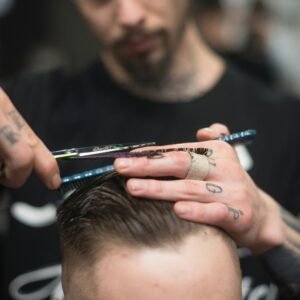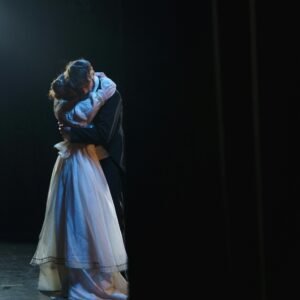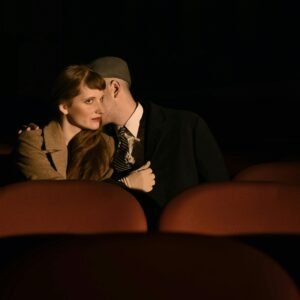Hair curlers, a timeless tool in the beauty arsenal, have undergone a remarkable transformation over centuries. From the ancient Egyptians’ use of heated rods to modern-day heated rollers and curling irons, these devices have played a pivotal role in shaping beauty trends and personal expressions. This article delves into the history, types, and techniques associated with hair curlers, providing insights into their evolution and enduring popularity.
A Brief History of Hair Curlers
The journey of hair curlers dates back to ancient civilizations. The Egyptians, renowned for their elaborate hairstyles, used heated rods made of clay or metal to curl their hair. In ancient Greece, women employed similar techniques, often using wooden or metal spindles. During the Renaissance, women in Europe adopted various methods, including using rags or ribbons wrapped around damp hair to create curls.
The Industrial Revolution brought about significant advancements in hair curler technology. The invention of the curling iron in the 19th century revolutionized the way people styled their hair. These early curling irons were often made of metal and heated over a flame or stove. Over time, advancements in materials and heating mechanisms led to safer and more efficient curling irons.
Types of Hair Curlers
Today, the market offers a wide variety of hair curlers, each with its own unique features and benefits. Here are some of the most popular types:
- Hot Rollers: These classic curlers are heated and then applied to damp hair. They come in various sizes and shapes, allowing for different curl patterns. Modern hot rollers often feature ceramic or tourmaline coatings to help reduce frizz and damage.
- Curling Irons: Curling irons are versatile tools that can create a range of curls, from loose waves to tight spirals. They come in different barrel sizes and shapes, allowing users to customize their styles. Some curling irons feature adjustable temperature settings and swivel cords for convenience.
- Self-Gripping Rollers: These rollers are designed to grip hair without the need for clips or pins. They are often used for creating loose waves or adding volume.
- Spiral Curlers: These curlers have a spiral shape that helps create defined, spiral curls. They are often used for achieving a vintage or retro look.
- Foam Rollers: Foam rollers are lightweight and gentle on hair. They are commonly used for creating soft waves or adding volume.
Curling Techniques and Tips
Achieving the perfect curls requires a combination of technique and product selection. Here are some tips to consider:
- Hair Preparation: Start with clean, damp hair. Apply a heat protectant product to minimize damage.
- Sectioning: Divide your hair into sections to make the curling process easier.
- Curling Direction: The direction you curl your hair will determine the shape and style of your curls. Experiment with different directions to find what works best for you.
- Holding Time: The amount of time you hold the curler on your hair will affect the tightness of the curl. For tighter curls, hold the curler longer.
- Cooling Time: Allow your curls to cool completely before touching or brushing them. This will help set the style.
- Styling Products: Use styling products like hairspray or mousse to help hold your curls in place.
Choosing the Right Hair Curlers
Selecting the right hair curlers depends on your desired style, hair type, and personal preferences. Consider the following factors:
- Hair Length and Texture: Longer hair may require larger curlers, while shorter hair can benefit from smaller sizes. For fine hair, opt for gentler options like foam rollers or self-gripping rollers. For thicker hair, stronger curlers or higher heat settings may be necessary.
- Desired Style: If you want tight, defined curls, spiral curlers or smaller curling irons are good choices. For looser waves, hot rollers or larger curling irons are suitable.
- Ease of Use: Consider your comfort level and the amount of time you want to spend styling your hair. Some curlers are easier to use than others.
- Budget: Hair curlers come in a wide range of prices.
Hair Curlers and Modern Trends
Hair curlers continue to evolve in response to changing beauty trends. Modern innovations include ceramic and tourmaline coatings for smoother curls, adjustable temperature settings for customized styling, and cordless designs for added convenience. As technology advances, we can expect to see even more innovative hair curler products in the future.
Frequently Asked Questions About Hair Curlers
What are the different types of hair curlers?
There are several types of hair curlers available, each with its own unique characteristics:
- Hot rollers: These are heated curlers that are applied to damp hair to create curls.
- Curling irons: These are heated tools with a cylindrical barrel that can be used to create curls of various sizes.
- Self-gripping rollers: These rollers have a textured surface that helps them grip hair without the need for clips or pins.
How do I choose the right hair curler for my hair type and desired style?
The best hair curler for you depends on your hair length, texture, and desired style. Consider the following factors:
- Desired style: If you want tight, defined curls, spiral curlers or smaller curling irons are good choices. For looser waves, hot rollers or larger curling irons are suitable.
- Ease of use: Consider your comfort level and the amount of time you want to spend styling your hair. Some curlers are easier to use than others.
How often can I use hair curlers?
It’s best to limit your use of hair curler to a few times a week to avoid excessive heat damage. If you use them frequently, make sure to use a heat protectant product and condition your hair regularly.
In conclusion, hair curlers have played a significant role in shaping beauty trends throughout history. From ancient Egypt to modern times, these versatile tools have empowered individuals to express their personal style and create stunning hairstyles. By understanding the different types of hair curlers and mastering various techniques, you can achieve beautiful, long-lasting curls that complement your unique look.
To read more, click here.





